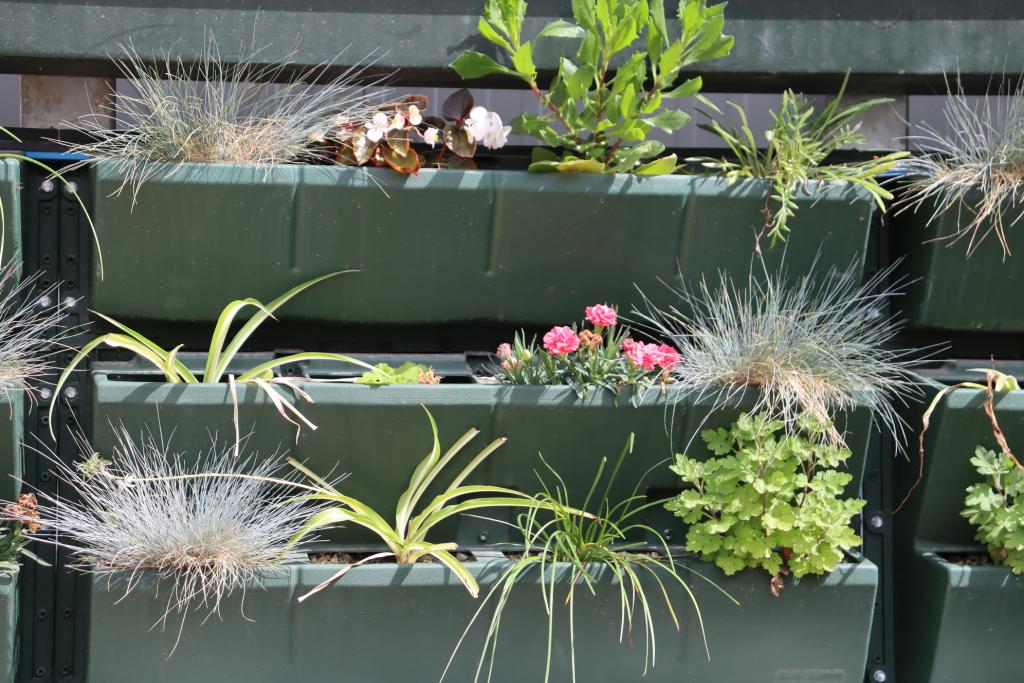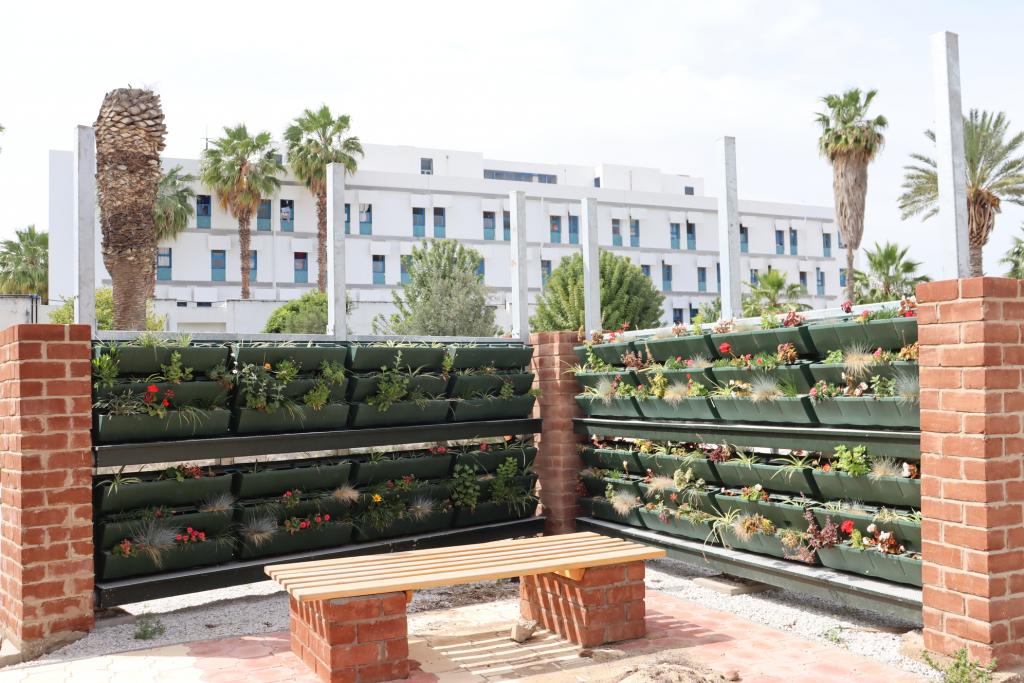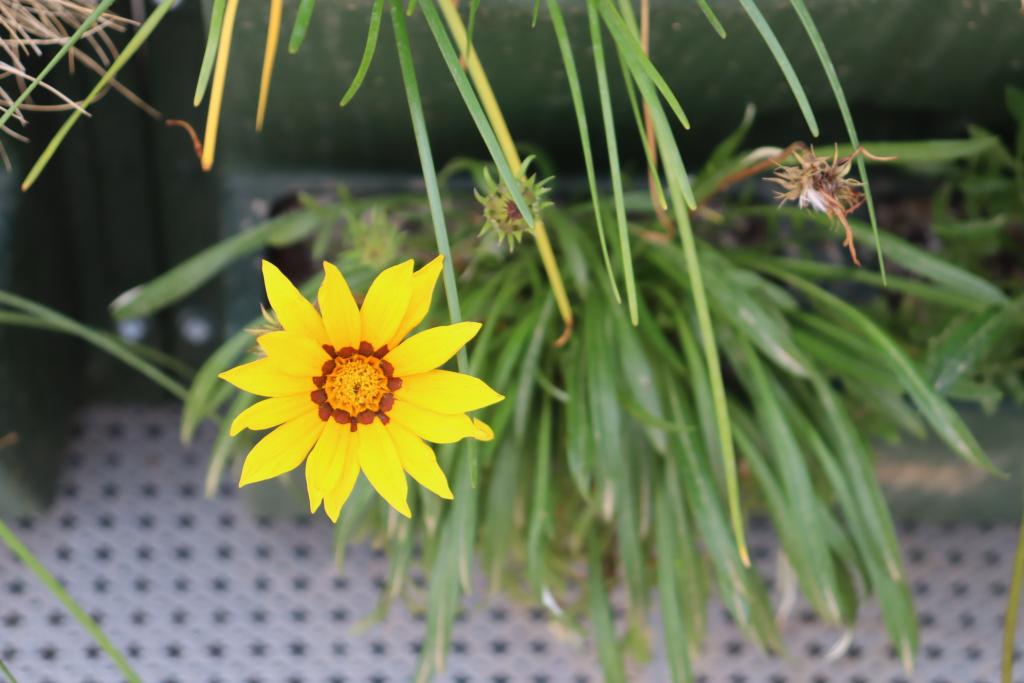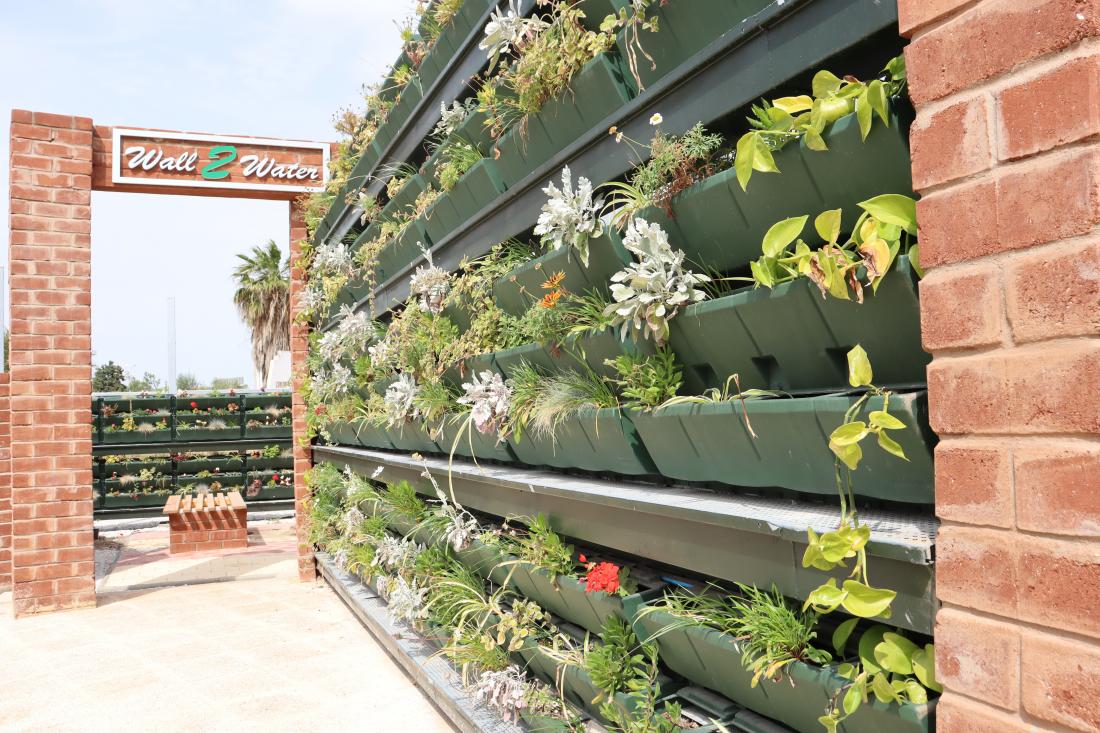Exciting news has emerged from Tunisia as the first Living Green Wall (LGW) pilot has been successfully realized as part of the NAWAMED project.
The Living Green Wall “Wall2Water” is a pioneering nature-based solution (NbS) that addresses the efficient treatment of greywater, specifically from the student residence’s showers.
The successful implementation of this pilot project by experts from the Centre for Water Research and Technologies CERTE and IRIDRA, both project partners, represents a significant step forward in sustainable water management practices in Tunisia and the broader Mediterranean region. By implementing Living Green Wall, the aim is to reduce the pressure on conventional water sources and promote water reuse, which is particularly crucial in areas with water scarcity. It also showcases the potential of NbS in addressing water challenges at the urban level. The positive outcomes and lessons learned from the Living Green Wall implementation in Tunisia will enable multiplication and adaptation to several contexts.

The Living Green Wall is designed as a “reactor” in which the substrate is multi-layered to promote different processes as adsorption and filtration, and the plants are selected to promote nutrient/pollution uptake/degradation thanks to bacteriological development at root level. The combination of water, plant and substrate ensures grey water treatment. The treated water undergoes UV disinfection and is injected into the flush toilets of the “Sustainable Water Management House- SWM House”, a CERTE pilot station where the Living Green Wall is implemented.
The green wall enables the safety treatment and recycling of grey water, which accounts for up to 70% of domestic water consumption. It also creates an ecosystem in an urban environment, bringing biodiversity and inducing a local reduction in temperature. The green space created absorbs CO2 and helps reduce air pollution, as well as lowering the temperature inside the SWM-House. A rainwater collection system has also been installed on the site to ensure sustainable and local water management. Around the wall, a relaxing environment is created for students.

This solution is ideally adapted to urban environments, where space is limited and walls predominate over green spaces. It fits in with a local zero-discharge water management approach, but also with the concept of a sustainable, green city and as adaptation to the effects of climate change.
The Living Green Wall developed is applicable not only to houses, but also to stadiums, hammams, hotels or any building with locally high grey water production.
Overall, the realization of the first Living Green Wall in Tunisia through the NAWAMED project is a significant milestone in advancing NbS for domestic water reuse at urban level and promoting sustainable water management practices in the Med region.
Watch the videos where experts from CERTE and IRIDRA explain how the Wall2Water works and where Latifa Bousselmi gives a wider insight into the pilot and the project in general at this link.


